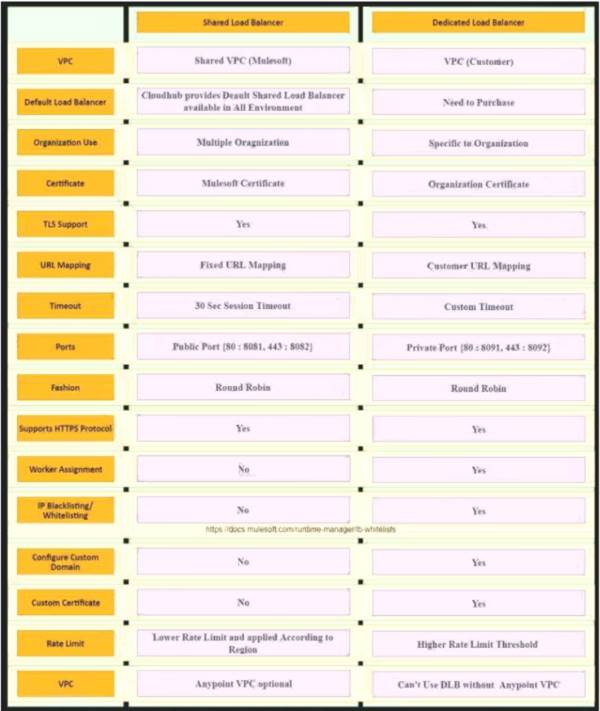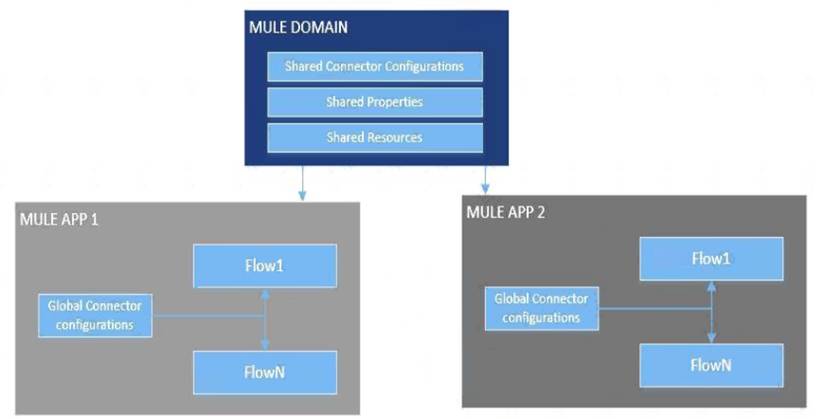An API implementation is being developed to expose data from a production database via HTTP requests. The API implementation executes a database SELECT statement that is dynamically created based upon data received from each incoming HTTP request. The developers are planning to use various types of testing to make sure the Mule application works as expected, can handle specific workloads, and behaves correctly from an API consumer perspective. What type of testing would typically mock the results from each SELECT statement rather than actually execute it in the production database?
Correct Answer:
A
In Unit testing instead of using actual backends, stubs are used for the backend services. This ensures that developers are not blocked and have no dependency on other systems.
In Unit testing instead of using actual backends, stubs are used for the backend services. This ensures that developers are not blocked and have no dependency on other systems.
Below are the typical characteristics of unit testing.
-- Unit tests do not require deployment into any special environment, such as a staging environment
-- Unit tests san be run from within an embedded Mule runtime
-- Unit tests can/should be implemented using MUnit
-- For read-only interactions to any dependencies (such as other APIs): allowed to invoke production endpoints
-- For write interactions: developers must implement mocks using MUnit
-- Require knowledge of the implementation details of the API implementation under test
In a Mule Application, a flow contains two (2) JMS consume operations that are used to connect to a JMS broker and consume messages from two(2) JMS destination. The Mule application then joins the two JMS messages together.
The JMS broker does not implement high availability (HA) and periodically experiences scheduled outages of upto 10 mins for routine maintenance.
What is the most idiomatic (used for its intented purpose) way to build the mule flow so it can best recover from the expected outages?
Correct Answer:
A
When an operation in a Mule application fails to connect to an external server, the default behavior is for the operation to fail immediately and return a connectivity error. You can modify this default behavior by configuring a reconnection strategy for the operation. You can configure a reconnection strategy for an operation either by modifying the operation properties or by modifying the configuration of the global element for the operation. The following are the available reconnection strategies and their behaviors: None Is the default behavior, which immediately returns a connectivity error if the attempt to connect is unsuccessful Standard (reconnect) Sets the number of reconnection attempts and the interval at which to execute them before returning a connectivity error Forever (reconnect-forever) Attempts to reconnect continually at a given interval
What comparison is true about a CloudHub Dedicated Load Balancer (DLB) vs. the CloudHub Shared Load Balancer (SLB)?
Correct Answer:
A
* Shared load balancers don’t allow you to configure custom SSL certificates or proxy rules
* Dedicated Load Balancer are optional but you need to purchase them additionally if needed.
* TLS is a cryptographic protocol that provides communications security for your Mule app. TLS offers many different ways of exchanging keys for authentication, encrypting data, and guaranteeing message integrity.
* The CloudHub Shared Load Balancer terminates TLS connections and uses its own server-side certificate.
* Only a DLB allows the configuration of a custom TLS server certificate
* DLB enables you to define SSL configurations to provide custom certificates and optionally enforce two-way SSL client authentication.
* To use a DLB in your environment, you must first create an Anypoint VPC. Because you can associate multiple environments with the same Anypoint VPC, you can use the same dedicated load balancer for your different environments.
* MuleSoft Reference: https://docs.mulesoft.com/runtime-manager/dedicated-load-balancer-tutorial Additional Info on SLB Vs DLB:
Table Description automatically generated
What is true about automating interactions with Anypoint Platform using tools such as Anypoint Platform REST API's, Anypoint CLI or the Mule Maven plugin?
Correct Answer:
A
Correct answer is By default, the Anypoint CLI and Mule Maven plugin are not included in the Mule runtime Maven is not part of runtime though it is part of studio. You do not need it to deploy in order to deploy your app. Same is the case with CLI.
What is not true about Mule Domain Project?
Correct Answer:
C
* Mule Domain Project is ONLY available for customer-hosted Mule runtimes, but not for Anypoint Runtime
Fabric
* Mule domain project is available for Hybrid and Private Cloud (PCE). Rest all provide application isolation and can't support domain project.
What is Mule Domain Project?
* A Mule Domain Project is implemented to configure the resources that are shared among different projects. These resources can be used by all the projects associated with this domain. Mule applications can be associated with only one domain, but a domain can be associated with multiple projects. Shared resources allow multiple development teams to work in parallel using the same set of reusable connectors. Defining these connectors as shared resources at the domain level allows the team to: - Expose multiple services within the domain through the same port. - Share the connection to persistent storage. - Share services between apps through a well-defined interface. - Ensure consistency between apps upon any changes because the configuration is only set in one place.
* Use domains Project to share the same host and port among multiple projects. You can declare the http connector within a domain project and associate the domain project with other projects. Doing this also allows to control thread settings, keystore configurations, time outs for all the requests made within multiple applications. You may think that one can also achieve this by duplicating the http connector configuration across all the applications. But, doing this may pose a nightmare if you have to make a change and redeploy all the applications.
* If you use connector configuration in the domain and let all the applications use the new domain instead of a default domain, you will maintain only one copy of the http connector configuration. Any changes will require only the domain to the redeployed instead of all the applications.
You can start using domains in only three steps:
1) Create a Mule Domain project
2) Create the global connector configurations which needs to be shared across the applications inside the Mule Domain project
3) Modify the value of domain in mule-deploy.properties file of the applications Graphical user interface Description automatically generated